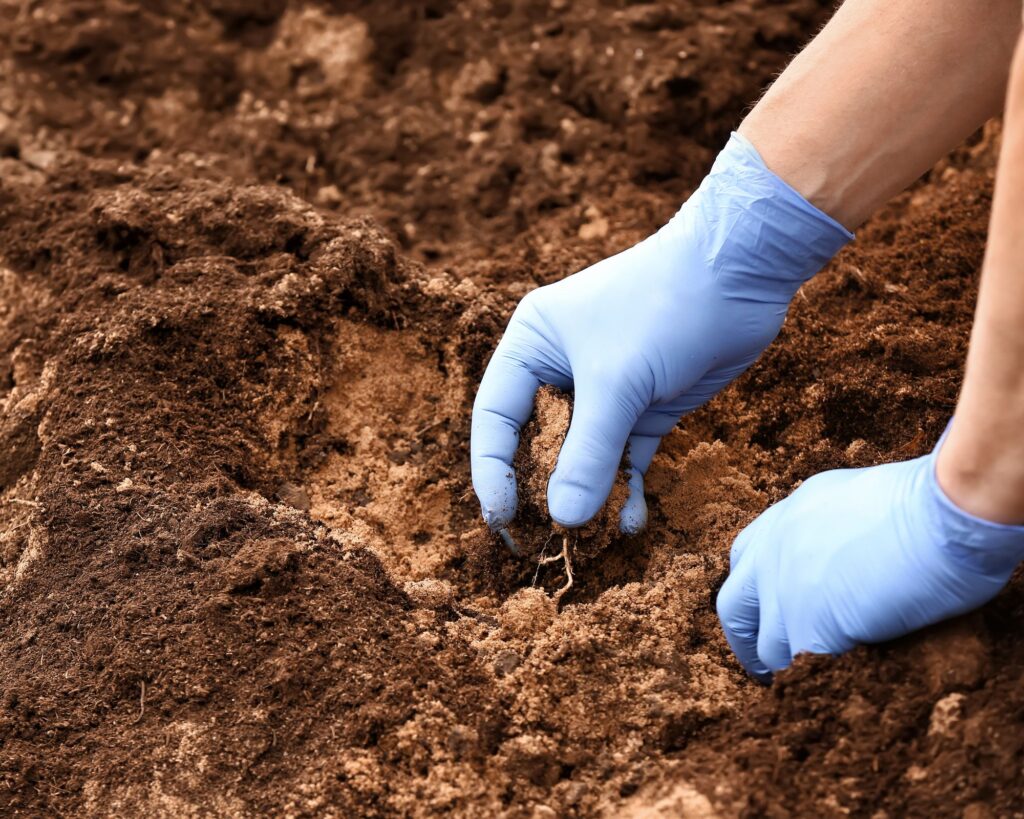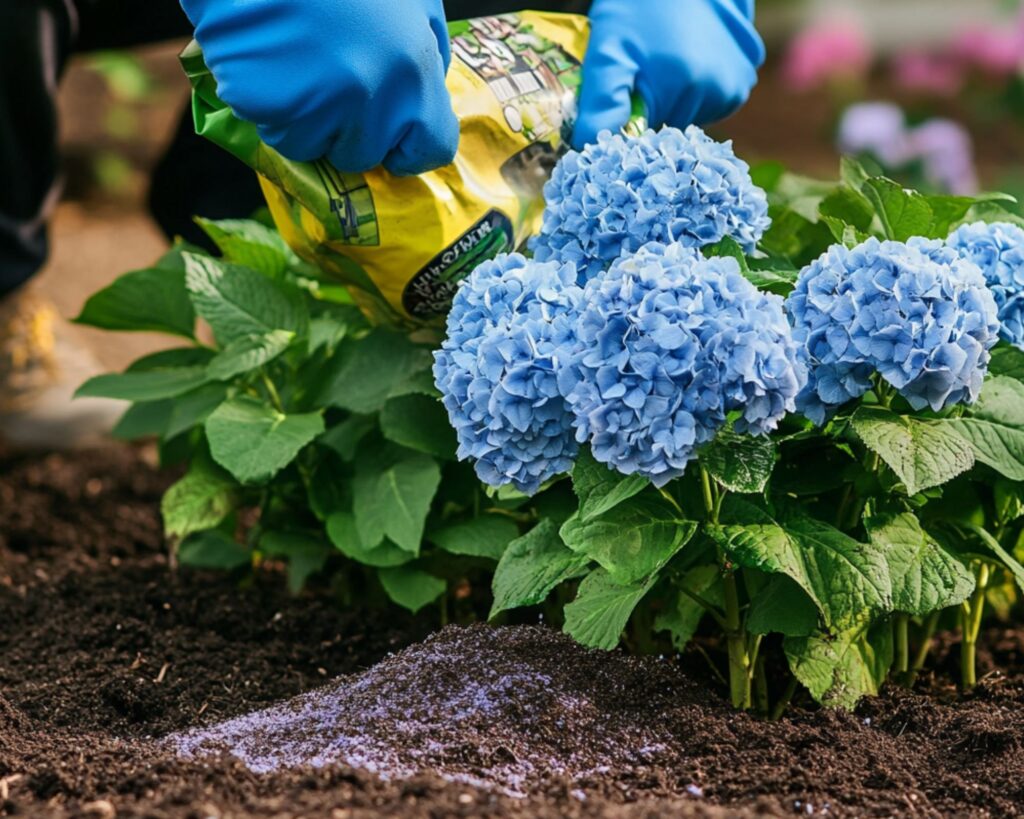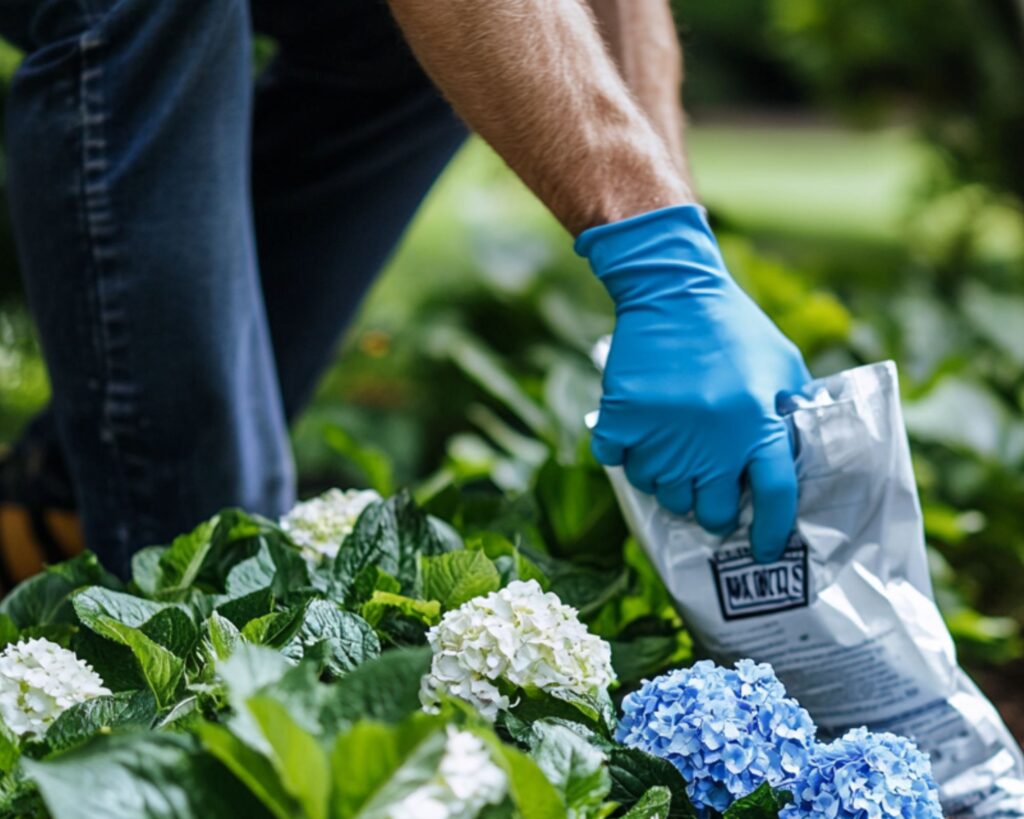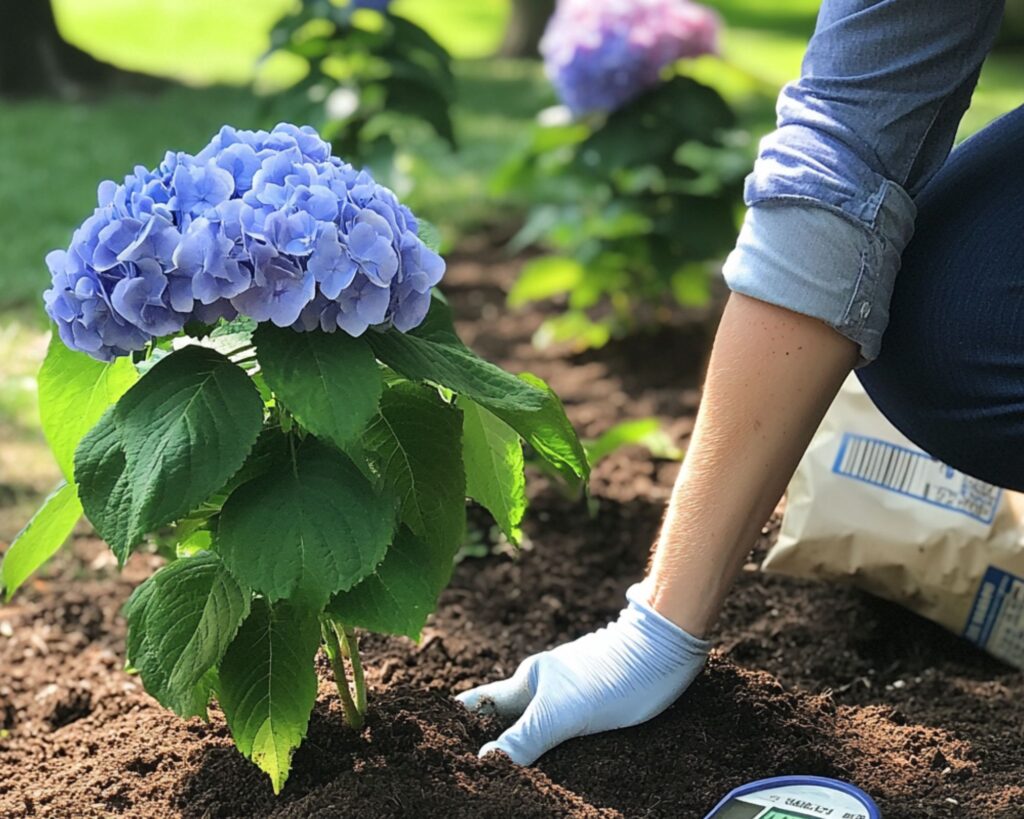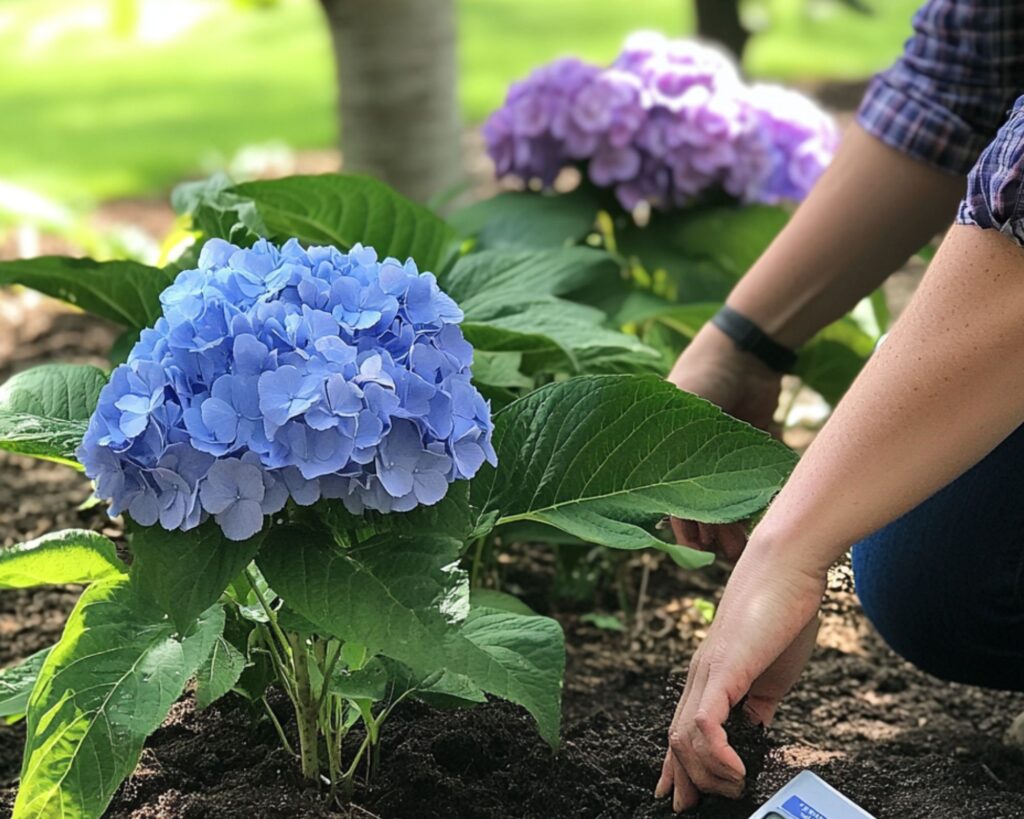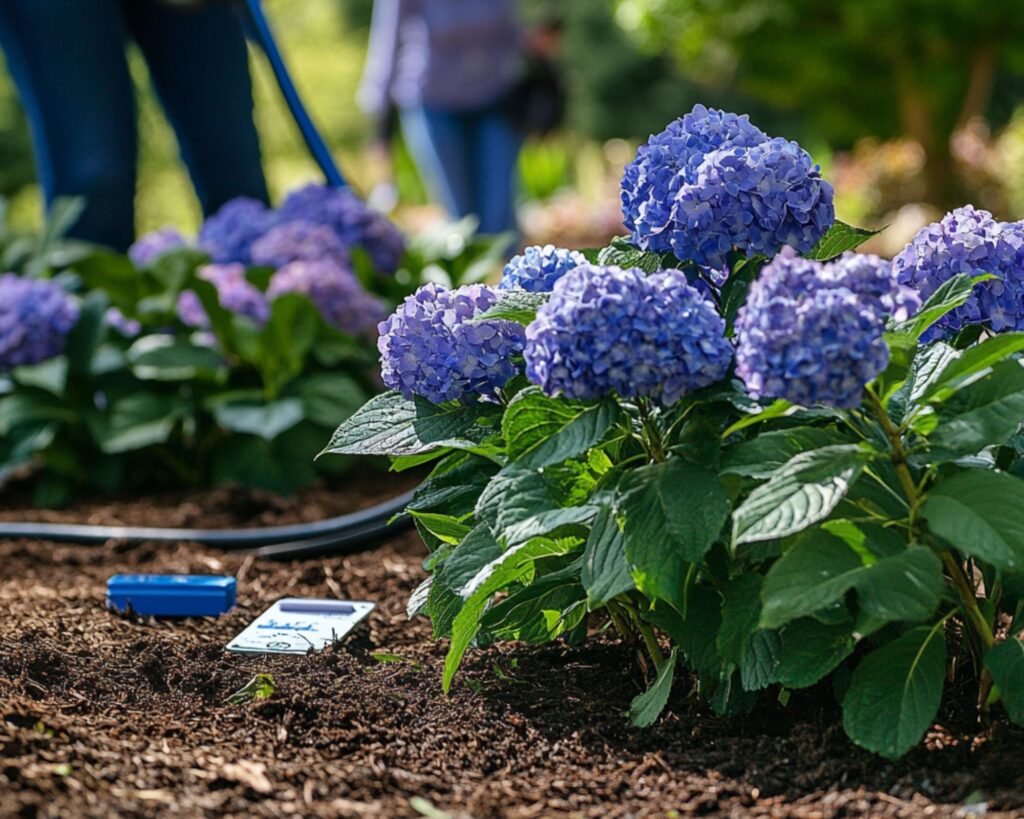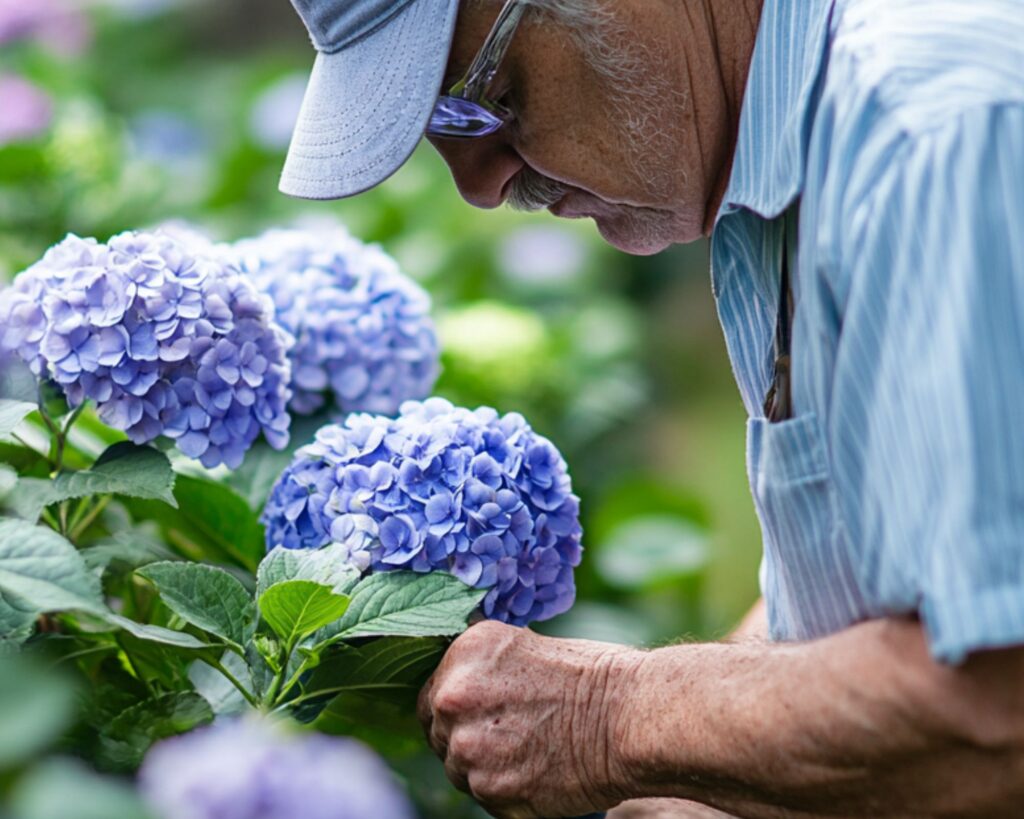What if I told you that you could change the color of your hydrangeas as easily as adjusting the settings on your phone? It’s true!
These beautiful blooms have a hidden talent – the ability to shift from pink to blue (or vice versa) depending on how you treat them. The secret lies in the soil’s pH level, which you can easily alter using the right fertilizer.
Curious to learn how? In this article, you’ll uncover the simple steps to transform your hydrangeas’ hues and add a touch of magic to your garden!
Understanding Hydrangea Color Change
Hydrangeas are unique because their bloom colors can be influenced directly by soil conditions. By using specific fertilizers, you can adjust the soil’s pH, which is key to changing these flowers’ hues.
The Role of Soil pH
The color transformation in hydrangeas is primarily linked to soil pH levels. When soil is acidic, with a pH below 6, the blooms often turn blue. Alkaline soils, with a pH above 7, tend to produce pink blooms.
To modify soil pH, you can use aluminum sulfate to acidify the soil or ground lime to make it more alkaline. Testing your soil’s pH regularly ensures that it remains at the desired level.
Adjustments may take some time, as changes in soil chemistry naturally occur gradually. Maintaining the right pH balance is crucial for achieving the hydrangea color you desire.
Hydrangea Types and Color Variability
Different types of hydrangeas react differently to soil pH changes. Hydrangea macrophylla, for example, is well known for its color-changing capability, whereas Hydrangea paniculata typically remains white and is less influenced by soil pH.
To experiment with color changes, ensure you’re growing the correct variety. Hydrangea macrophylla offers more variety in color adjustment, allowing for captivating shades of blues, pinks, and purples.
When selecting fertilizer, it’s essential to match your choice with the type of hydrangea, as not all types will respond equally to pH changes.
Preparing to Fertilize
Getting your hydrangeas to show off vibrant colors involves choosing the right fertilizer and practicing safe preparation techniques. This ensures that your plants receive the nutrients needed for the magical color transformation.
Choosing the Right Fertilizer
Picking the correct fertilizer plays a crucial role in altering the color of your hydrangeas. For more pink hues, opt for high-phosphorus fertilizers, as they help reduce soil acidity.
If you want blue hues, use a fertilizer rich in aluminum sulfate, which increases acidity. Alkaline soil often leads to pink hydrangeas, while more acidic soil encourages blue blooms.
Always follow the manufacturer’s instructions and apply the recommended amount to prevent damage.
Mnemonics to remember:
- Pink: High-Phosphorus
- Blue: Aluminum Sulfate
Monitoring the soil pH with a test kit can help you make adjustments accordingly, ensuring you achieve the desired color.
Safety Measures and Best Practices
Safety during fertilization is essential for you and the plants. Wear gloves to protect your skin from any potential irritants. Ensure that the area is well-ventilated if you’re working indoors.
Important: Keep fertilizers out of reach of children and pets. Store them securely to avoid accidental ingestion.
Avoid applying fertilizer on windy days as it can be dispersed unevenly. Water your hydrangeas after fertilizing to help nutrients penetrate the soil. It keeps the fertilizer from sitting on the leaves and causing burns.
Taking these precautions will ensure that you enjoy beautiful hydrangeas while maintaining a safe gardening environment.
Fertilizing for Color Alteration
Changing the color of hydrangeas using fertilizer is all about manipulating soil conditions, primarily through pH adjustments. By altering the soil pH, you can transform the flowers’ hues.
It’s crucial to apply fertilizers correctly and at the appropriate times to achieve the best results.
Altering pH With Fertilizer
Hydrangea color change depends mostly on soil pH. Acidic soils (pH < 6) encourage blue hues, while alkaline soils (pH > 6) promote pink flowers. To make your soil more acidic, aluminum sulfate or sulfur can be added.
Use a soil pH tester to gauge levels before application. For pink tones, work lime into the soil to increase pH. Aim for a slow transition, as drastic changes can harm the plant.
Application Techniques
When applying fertilizers for color change, ensure you follow instructions closely, as over-fertilizing can damage your hydrangeas. Dilute fertilizers in water and apply evenly around the plant base.
It’s helpful to create a small trench around the base of the plant for even distribution. Avoid direct contact with plant stems and foliage. Water thoroughly after applying to help the soil absorb the nutrients.
Timing and Frequency
Timing is key in manipulating hydrangea colors. Begin soil preparation several months before the desired blooming period.
For blue hydrangeas, start treatments in late fall or early spring. Pink varieties can be treated in early spring. Perform applications every few months for gradual color shifts, and adjust based on results and plant response.
Maintaining Your Hydrangeas
Keeping your hydrangeas vibrant and healthy involves consistent care, monitoring soil conditions, and adjusting fertilization as the plants mature. This will ensure they thrive while maintaining the desired color.
Regular Care Tips
Hydrangeas need regular watering to flourish. Make sure to water deeply to encourage strong root development. Aim for about 1 inch of water per week, either from rainfall or supplemental watering.
Pruning is crucial for health and bloom production. Deadheading spent flowers encourages new blooms. Trim in late winter or early spring to shape the plant and remove dead wood.
Avoid cutting back too late in the season to prevent damage to developing buds.
Mulching helps retain moisture in the soil and suppress weeds. Apply a 2-3 inch layer of organic mulch around the base, making sure it doesn’t touch the stems directly. This maintains a consistent soil temperature and moisture level.
Adjusting Fertilization Over Time
Adapt your fertilization routine as the hydrangeas grow. In early spring, apply a balanced 10-10-10 fertilizer to support new growth.
For color alteration, use aluminum sulfate to deepen blue tones or hydrated lime to encourage pinks. Apply these in moderation, following package instructions to avoid harming the plant.
Throughout the growing season, consider a slow-release fertilizer to provide consistent nutrients. Frequency and quantity depend on plant age and specific soil conditions.
Balance is essential, as over-fertilizing can damage the plant and alter desired flower colors. Stay attentive, and adjust based on the plant’s performance and appearance.
Additional Tips and Tricks
Transforming hydrangea colors can involve some fascinating techniques. You’ll find natural solutions for enhancing colors and learn how to solve issues that may arise during the process.
Natural Additives for Color Enhancement
Consider using coffee grounds to shift colors toward a deeper blue. Sprinkle them around the base of your plants. Not only do they help with acidity, but they also improve soil structure.
Try egg shells too. Crushed and added to soil, they can increase alkalinity, coaxing that pink hue from your blooms.
Vinegar is another household item that can aid in color adjustment. Mix one cup of vinegar with a gallon of water. Pour over the soil to gently nudge colors into blue territory.
Remember to use these natural additives in moderation to keep your plants healthy and soil balanced.
Troubleshooting Common Issues
If your hydrangeas aren’t changing color as expected, inspect the soil pH levels. Acidity and alkalinity variations are often the root of uncooperative colors. Use a soil test kit available at garden centers to check for accurate readings.
Yellowing leaves might indicate nutrient deficiencies. Consider an iron sulfate application to rectify this.
For blooms wilting prematurely, ensure your plants are getting enough water, especially in hotter climates.
Should pests like aphids attack, a gentle DIY soap spray can reduce their impact without chemicals. Consistent care and observation will help you remedy most hydrangea challenges effectively.
Keeping these tips in mind can lead to those wonderful colors you’ve envisioned for your garden.
Hydrangeas offer a captivating display of color that can be easily influenced with the right care and attention. With a bit of patience and the proper techniques, you’ll find yourself enjoying a personalized palette of vibrant hydrangea blooms in no time!


